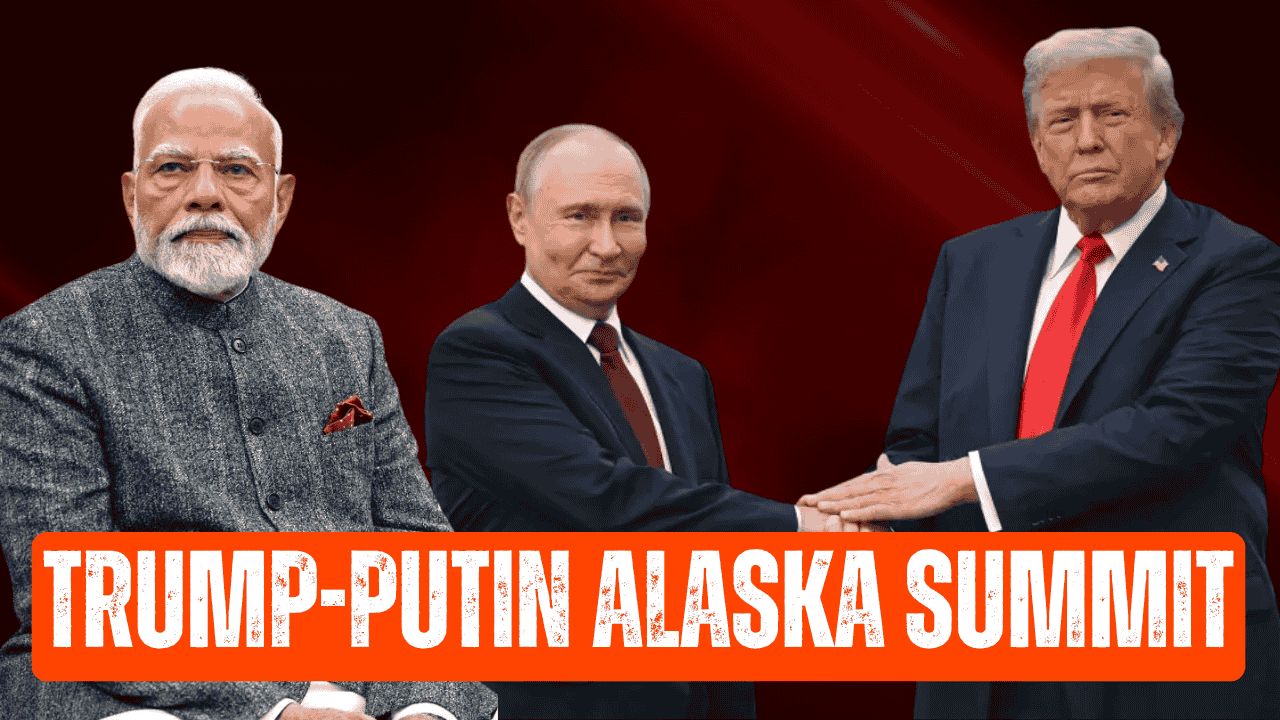Trump-Putin Alaska Summit and India's Strategic Autonomy: A Critical Analysis for UPSC Aspirants
The recent Trump-Putin Alaska Summit and the subsequent US tariff imposition on India have highlighted crucial aspects of contemporary geopolitics that every UPSC aspirant must understand. This watershed moment in international relations demonstrates India's evolving foreign policy approach and the challenges of maintaining strategic autonomy in a multipolar world.
Understanding the Alaska Summit: A Geopolitical Reset Attempt
The historic summit between Presidents Donald Trump and Vladimir Putin in Alaska represented a significant diplomatic engagement amid the ongoing Russia-Ukraine conflict. The meeting, held at Joint Base Elmendorf-Richardson, was initially projected as a potential breakthrough in ending Europe's most devastating conflict since World War II.
Key Outcomes of the Summit
The summit concluded with mixed results and no concrete agreements. Trump acknowledged that while there were "many points that we agreed on," several "big ones" remained unresolved. The meeting ended earlier than scheduled, lasting only three and a half hours instead of the planned six, with no joint lunch or substantive agreements on business deals.
Putin's diplomatic gains were evident as he received full honors and recognition from Washington, which served his strategic objectives of legitimizing Russia's position. The Russian president skillfully used the platform to reinforce Trump's claims about preventing the conflict had he been president in 2020.
India's Tariff Challenge: A Test of Strategic Autonomy
The Tariff Imposition Reality
The Trump administration officially imposed 50% tariffs on Indian goods, effective August 27, 2025. This includes a 25% base tariff plus an additional 25% penalty specifically targeting India's continued purchase of Russian crude oil. The Department of Homeland Security justified these measures as responses to "threats to the United States by the Government of the Russian Federation".
India's Energy Security Dilemma
Russian crude constituted 35-40% of India's oil imports in 2024, a dramatic increase from just 3% in 2021. Between January 2023 and mid-2025, India imported Russian crude worth $120 billion, generating positive economic multiplier effects[Topic content]. This energy partnership became a critical pillar of India's economic strategy during global supply chain disruptions.
Strategic Autonomy vs. External Pressures
Defining Strategic Autonomy
Strategic autonomy refers to a nation's ability to make independent decisions regarding foreign policy and national interests without external pressures. For India, this concept represents the evolution from Nehru's non-alignment to contemporary multi-alignment strategies.
India's Multi-Alignment Approach
Modern India has adopted multi-alignment - a series of parallel relationships that strengthen multilateral partnerships while seeking common approaches toward security and economic cooperation. This approach differs significantly from Cold War-era non-alignment:
Non-Alignment Characteristics:
Avoiding military blocs during bipolar world order
Maintaining equidistance between superpowers
Focus on sovereignty protection
Multi-Alignment Features:
Engaging multiple power centers simultaneously
Issue-based partnerships rather than bloc politics
Balancing relationships with competing nations
India's Response Strategy
Diplomatic Resilience
India's External Affairs Ministry denounced the tariff measures as "unfair, unjustified and unreasonable", while reiterating its commitment to protecting national interests. The government emphasized that energy security for 1.4 billion citizens remains a top priority.
Strategic Partnerships Balancing
India's approach demonstrates sophisticated diplomatic maneuvering:
With Russia: Maintaining energy cooperation while addressing Ukraine conflict concerns
With United States: Preserving strategic partnership despite tariff disagreements
With BRICS: Leading discussions on alternative financial mechanisms
Through QUAD: Continuing Indo-Pacific engagement
Implications for India's Foreign Policy
The Pressure Test Results
The tariff episode revealed three critical structural realities for Indian foreign policy:
Economic Recalibration Necessity: India must adapt its economy to evolving globalization dynamics
Russia Relationship Costs: Strategic ties with Russia now expose India to greater external economic pressures
US Relationship Volatility: Trump's transactional approach highlights risks of over-dependence on Washington's goodwill[Topic content]
BRICS and Alternative Frameworks
At the 17th BRICS Summit in Rio de Janeiro (July 2025), India announced its upcoming presidency for 2026, proposing to redefine BRICS as "Building Resilience and Innovation for Cooperation and Sustainability". This initiative represents India's commitment to Global South leadership and alternative international cooperation mechanisms.
Lessons for International Relations Understanding
Multipolar World Dynamics
The Alaska Summit and subsequent developments illustrate the transition from unipolar to multipolar world order. Major powers are increasingly using economic tools as instruments of foreign policy, challenging traditional diplomatic approaches.
Energy Geopolitics
Energy security has become inseparable from strategic autonomy. India's Russian oil imports, while economically beneficial, demonstrate how energy partnerships can become geopolitical vulnerabilities in an interconnected world.
Summit Diplomacy Limitations
The Alaska Summit's limited outcomes highlight that personal diplomacy between leaders has constraints when dealing with complex, multi-stakeholder conflicts. The absence of Ukraine from discussions underscored the challenges of excluding key stakeholders from peace processes.
Contemporary Relevance for UPSC
Current Affairs Integration
This episode connects multiple UPSC themes:
International Relations: Bilateral relations, strategic partnerships, conflict resolution
Indian Foreign Policy: Strategic autonomy, energy security, economic diplomacy
Global Governance: Reform of international institutions, Global South cooperation
Economic Relations: Trade wars, sanctions, energy geopolitics
Analytical Framework
UPSC aspirants should analyze this situation through multiple lenses:
Realist Perspective: Power competition and national interest calculations
Liberal Approach: Institutional cooperation and interdependence costs
Constructivist View: Identity, norms, and diplomatic culture impacts
Key Takeaways for UPSC Aspirants
Strategic Understanding: India's foreign policy operates on multiple levels simultaneously, balancing relationships with competing powers while protecting core national interests. The Alaska Summit and tariff episode demonstrate that strategic autonomy requires constant calibration rather than rigid adherence to predetermined positions.
Contemporary Application: Modern diplomacy increasingly involves economic statecraft alongside traditional diplomatic tools. Understanding how trade, energy, and strategic partnerships intersect is crucial for analyzing contemporary international relations.
Policy Evolution: India's transition from non-alignment to multi-alignment reflects broader changes in global power distribution. Successful foreign policy requires adaptability to changing international circumstances while maintaining core principles.
Geopolitical Complexity: The interconnected nature of modern international relations means that bilateral relationships cannot be managed in isolation. India's relationship with Russia affects its ties with the United States, Europe, and other partners.
Future Preparedness: As India aspires to become a developed nation by 2047, managing strategic autonomy will remain central to its foreign policy success. Understanding these dynamics prepares aspirants for questions on contemporary international relations and India's role in global governance.








